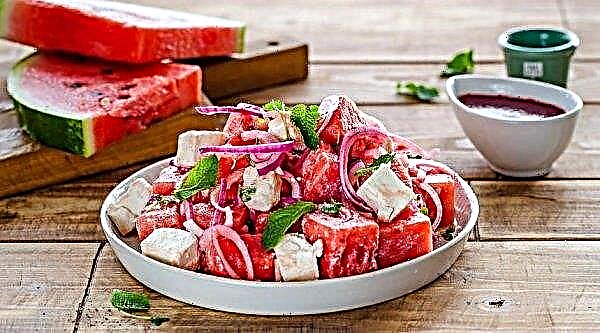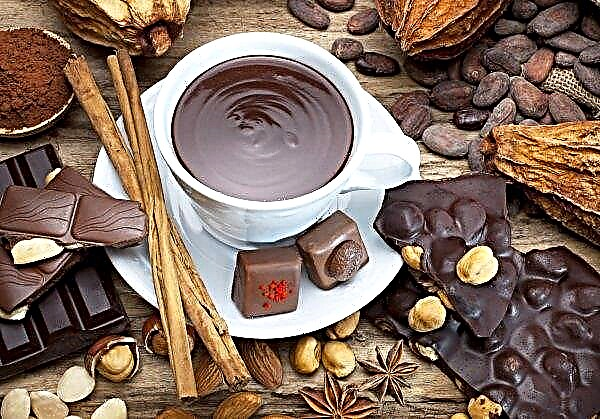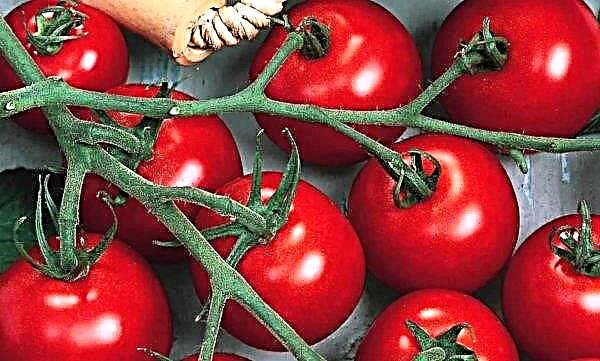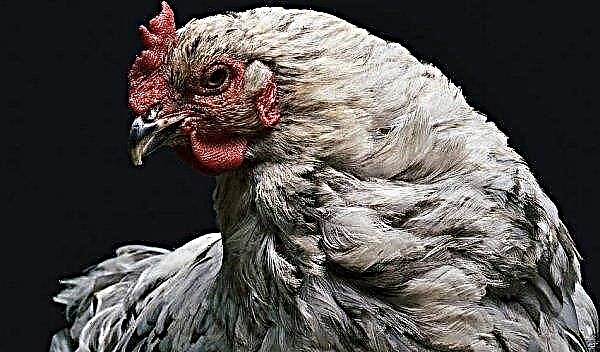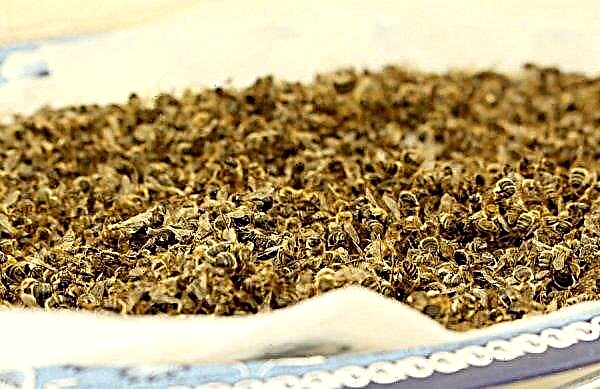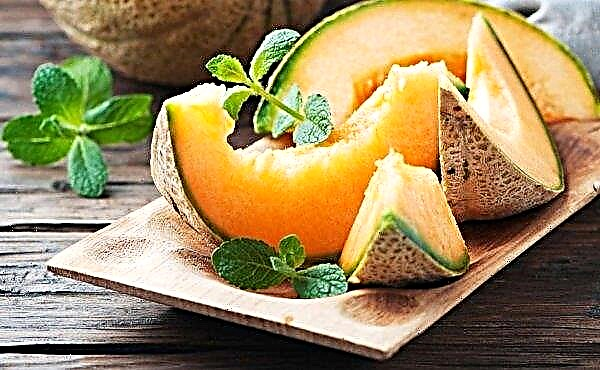Applying ginger as a seasoning, rarely anyone thinks about the beneficial properties of the root. This perennial herb is grown in India, Japan, Argentina, China, West Africa and Jamaica - it is there that the climate is ideal for it. It is used in cooking and medicine exclusively root or powder. Next, we will talk about the benefits and harms of spices for the female body.
The benefits of ginger
This root has a mass of medicinal properties that were known in ancient Rome. Tea was brewed from it, pieces were chewed to protect and cure the body from many ailments. The beneficial effect of spices was directed to the treatment of impotence and other diseases in men. Today it is also used not only as a spice in cooking, but also as a therapeutic agent.
Chemical composition
Healing qualities are due to the chemical composition of the plant, the presence of a huge amount of vitamins E, K, C, A and B, minerals, fiber, essential oils, biologically active substances, macrocells. Substances contained in the plant: chromium, sodium, calcium, manganese, silicon, iron, magnesium, phosphorus, leucine, tryptophan, choline, threonine.
Ginger is also rich in nicotinic, linolenic, caprylic, oleic acids. It also contains compounds rare for other products: cineole, borneol, cingiberen, fellandren, citral, bisabolen. Calorie content per 100 g of this product is equal to only 80 kcal.
By nutrient content:
- proteins - 17.7 g;
- fats - 0.7 g;
- carbohydrates - 1.8 g;
- dietary fiber - 2 g.
The root is famous for the lack of cholesterol, so it is recommended for people suffering from atherosclerosis. Due to its vast chemical composition and spicy taste, ginger root is used both for the prevention of diseases, tonus, and in the treatment of pathologies.
Effects on the human body
The healing properties of the root are popular among traditional medicine adherents. It has a unique composition, due to which it is famous for antiemetic, diaphoretic, anti-inflammatory, tonic effects. The gingerol contained in the substance warms the human body from the inside, tissues receive abundant saturation with nutrients and oxygen, which leads to vasodilation, acceleration of metabolism.
The use of the root strengthens the immune system, relieves inflammation, edema, and helps fight obesity. Also recommended to help cancer patients. This spice is recognized as a good tool for strengthening blood vessels. It helps lower cholesterol and helps prevent blood clots.
- Ginger is recommended for use with:
- headaches;
- nausea and toxicosis;
- dysbiosis;
- thrombophlebitis;
- inflammation of the joints, to relieve swelling and pain;
- colds, to improve the general condition of the body.

Contraindications and side effects
If a person is healthy, use is unlikely to harm the body. However, with excessive use, beneficial properties can lead to bad consequences: instead of calming, they will lead to insomnia, lethargy, or excessive agitation.
- It is also worth abandoning the use of this spice for people with the following diseases:
- Oncological diseases of the stomach or intestines. The contained substances provoke the growth of diseased cells. However, in the case of other manifestations of oncology, the spice can reduce the growth and development of cancer cells.
- Ulcers and gastrointestinal erosion due to mucosal irritation. Sharp pains, indigestion, and heartburn can occur.
- Hepatitis, cirrhosis of the liver.
- Hemorrhoids with bleeding: due to blood thinning, an abundant flow can begin, which is difficult to stop.
- Ginger Allergy.
- Heart disease, ischemia, pre-infarction condition.
- Skin diseases - swelling and irritation may occur.
- Stroke.
- Hypertension.
Use by women
Every woman wants to look beautiful and feel young and has resorted to various methods. One of them is the use of ginger.
When losing weight
First of all, the spice is justifiably considered a natural antidepressant: it inhibits the production of the stress hormone - cortisol, which preserves the human energy resources, and regulates carbohydrate metabolism. For this reason, a frequent companion of stress is seizing problems and consuming large amounts of “food waste”. Accordingly - the less cortisol, the less body fat.
Did you know? In 2010, scientists conducted studies in which they studied the effect of ginger on a quarter reduction in strength (muscle pain) after training.
The root regulates the digestive process by stimulating the production of saliva, gastric juice, and pancreatic secretion. The substance gingerol (which is a source of burning taste) helps to accelerate metabolism (metabolism), thanks to a surge of heat in the body. Faster metabolism - faster is losing weight. However, spice and its derivatives are contraindicated in patients with type I diabetes.
In the treatment of colds
The root fights bacteria well. It has been used for colds for several centuries as a painkiller, anti-inflammatory, immunomodulatory agent.
It eliminates many symptoms:
- thanks to essential oilsYou can reduce sore throat;
- bactericidal properties help relieve a runny nose, and expectorant cough.
With the disease, the body experiences a lack of vitamins. Ginger is used as an additive for additional trace elements that are essential during this period: B vitamins, ascorbic acid, and potassium.
Also, biologically active substances can increase sweating, which will slightly reduce body temperature. However, one should be careful with this antipyretic: you cannot drink hot ginger drink with hyperthermia due to the warming effect, and when the temperature has exceeded the barrier + 38 ° C, you should completely abandon it.
With gynecological diseases
Ginger root is good for women's health. The Journal of Reproductive Medicine published a study by Japanese scientists who created a drug based on the root and 12 other plant components. A drug test on 100 sick women showed a positive result: in 56% of the subjects, the menstrual cycle recovered, egg maturation began, uterine fibroids recovered, and adhesions in the ovaries disappeared.
The experiments are still ongoing, but barren women have a chance to become mothers. Doctors recommend drinking herbal tea with ginger when planning pregnancy to strengthen the tone of the uterus, liver and kidneys, improve the functioning of the hormonal system, during menstruation - to reduce pain.
You should be careful not to take ginger in cases where a woman:
- has gallstone disease - the use of spices will lead to a reduction in the bile ducts, and then to clogging of the bile duct with stones;
- suffering from stomach diseases - The mucous membrane can not withstand aggressive effects and aggravate gastritis or an ulcer.
With menopause
At the age of 45–55 years, a woman begins a menopause. At this time, ginger helps smooth out discomfort. Compound substances improve the smooth muscle relaxation process, normalize mood, hormonal levels, reduce irritability, remove headaches. In addition, they contribute to skin rejuvenation and prevent age-related changes. Women suffering from hypertension, angina pectoris and coronary heart disease should abandon the use of the root.
In addition, they contribute to skin rejuvenation and prevent age-related changes. Women suffering from hypertension, angina pectoris and coronary heart disease should abandon the use of the root.
During pregnancy
Despite the fact that ginger relieves discomfort, muscle cramps, nausea and reduces toxicosis, and also helps to cope with mood swings during pregnancy, it also has a number of contraindications for the expectant mother:
- so as not to provoke premature birth, exclude the use of root in the later stages;
- do not take teas while breastfeeding, since they can make the milk too bitter or cause an allergic reaction in the baby;
- discard spiceif you are taking drugs to lower blood pressure and stimulate the cardiovascular system.
Important! Do not aggravate the condition with the use of a plant in case of a miscarriage and in case of an increased tone of the uterus - there is a risk of spontaneous abortion.
Be sure to consult your doctor if you want to take ginger tea during pregnancy.
In cosmetology
Spice is valued by oriental women, who are famous for their elastic, young and toned skin. For the face, it is a wonderful anti-aging, tonic elixir. In facial cosmetics, essential oil is actively used, which makes up 3% of the root of the plant. This tool helps to combat dryness, wrinkles, lethargy of tissues, age spots. It cleanses and tightens pores, gives a healthy color to the skin, and various inflammations fade away.
The best recipes for face masks:
- For rejuvenation: mix 1 tsp ginger, 1 teaspoon lemon juice with 2 tbsp. liquid honey.
- To even out skin color, relieving inflammation and redness: mix for 1 hour ground ginger, honey, kefir 1%.
- To tone the skin any type: mix freshly ground ginger with olive oil in a 1: 1 ratio.
- For intensive hydration: mix 1 tbsp. chopped root, 4 drops of orange essential oil, 100 g of yogurt, 1.5 tbsp. liquid honey.
Keep all masks for 15–20 minutes.
Today, women strive for harmony by all possible methods. It is worth taking a closer look at ginger, which negatively affects the development of cellulite.
For anti-cellulite scrub you will need:
- sea salt - 1 tbsp. l .;
- any essential oil - 3-4 drops;
- grated ginger - 2 tbsp. l .;
- fresh coffee grounds - 1 tbsp. l
Scrub application:
- Mix all the ingredients.
- Rub dry skin with dry hands. If you have sensitive skin, massage on wet. Take 3 minutes. to each area, and then hold on the skin for another 10 minutes.
- Rinse off.
- Take a warm shower, rub with a towel, apply an oil mixture or anti-cellulite cream.
There are many recipes for anti-cellulite wraps.
Important! Before using ginger in cosmetics, be sure to conduct an express allergy test.
In this case, the root goes well with hot pepper, coffee grounds, honey, algae:
- Mix cosmetic clay and ginger in equal proportions, add the rest of the ingredients gradually until the consistency of thick sour cream.
- Apply the resulting mixture in a dense layer to clean problem areas.
- Wrap with cling film and cover with a warm blanket. Leave on for 30 minutes.
- Wash off with clean, warm water without using soap.
- Wipe the skin, apply a moisturizing or anti-cellulite cream.

Cooking
You can use the root in different ways: brew like tea, add chopped to salads, use as a spice in various dishes.
Tea
It is important to use the spice correctly so that it gives all its properties to the drink. By adding honey, lemon and cinnamon, you will get surprisingly tasty, healthy, but with different purposes teas.
For warming tea you will need:
- boiling water - 200 ml;
- ginger - 1 tsp;
- lemon - 1 slice;
- cinnamon - 0.5 tsp;
- honey - 1 tsp
Pour boiling water over ginger and cinnamon. Insist 2 hours. Before use, add honey and lemon.
Toning Tea Recipe:
- boiling water -1 l;
- honey - 2 tbsp. l .;
- cinnamon -1 stick;
- ginger - 50 g;
- lemon - 0.5 fruit.
 Pour all the ingredients with boiling water, insist for 3 hours. It is recommended to drink only in the morning, but not before bedtime, so as not to cause insomnia.
Pour all the ingredients with boiling water, insist for 3 hours. It is recommended to drink only in the morning, but not before bedtime, so as not to cause insomnia.Pickled ginger
The use of pickled root is extensive and popular due to its usefulness and interesting taste. To get beautiful pink ginger, use the following recipe.
Ingredients:
- ginger root - 100 g;
- salt - 1 hour with a slide;
- granulated sugar - 4 tbsp. l .;
- vinegar 9% (or any 6%) - 100 ml (or 150 ml);
- beets - 2 quarters of the root crop.
Step by step recipe:
- Peel the root, cut along the fibers.
- Mix vinegar, salt, sugar and water. Heat, but do not bring to a boil.
- Pour strips of ginger and beets with the resulting marinade, cover. After cooling, refrigerate for 3 days.

The finished product can be used as an independent snack, or as an ingredient in salads.
Using dry ginger
Dry powder is used in cooking, traditional medicine and cosmetology. Spice is added to soups, mushroom and vegetable snacks, salads, marinades for fish, meat, vegetables. It goes well with cereals, cheeses and legumes. Despite the severity, in some European countries they are added during preservation to jams, compotes, as well as pies and ice cream. The spice combines wonderfully with desserts, tea and coffee, alcoholic and non-alcoholic drinks.
Did you know? In the Middle Ages, this spice from Greece and Rome first came to England, and then spread to other European states. A great delicacy was ginger bread, which Elizabeth I loved very much.
To spice gave all the taste and aroma, add it at a certain time:
- in meat dishes - in 15 minutes until ready;
- in sauces - after cooking;
- in drinks - after cooking;
- into the dough - during the batch.
Also consider the right amount:
- per 1 kg of meat - no more than 1 tsp;
- per 1 kg of dough or 1 liter of liquid - 1 g;
- for 1 serving of dessert - 2 mg.
 Despite the fact that the root has a number of contraindications, it is also incredibly rich in beneficial properties for the human body. Take ginger both in root and in dried form in moderation, and your body will be grateful to you.
Despite the fact that the root has a number of contraindications, it is also incredibly rich in beneficial properties for the human body. Take ginger both in root and in dried form in moderation, and your body will be grateful to you.

